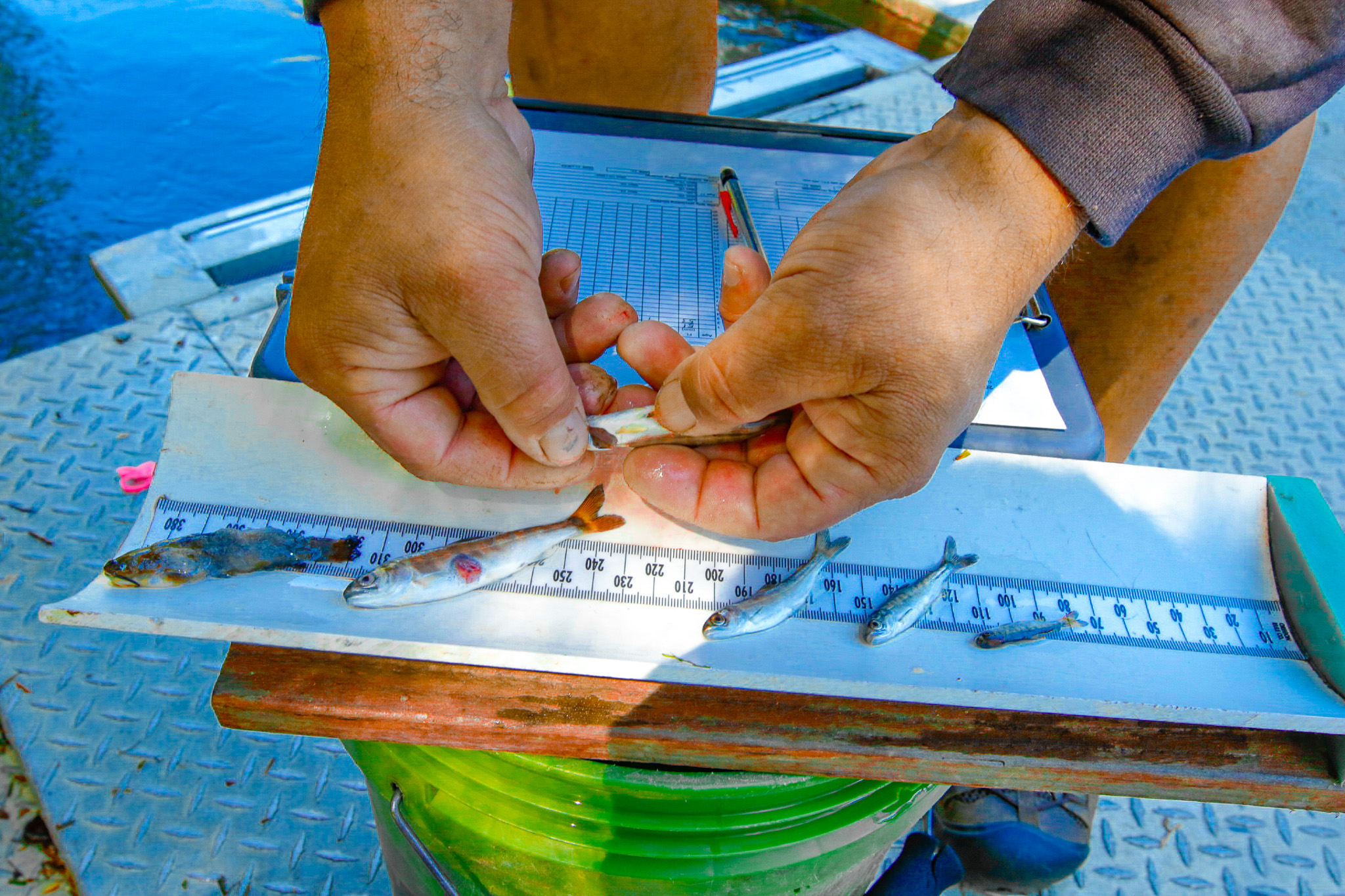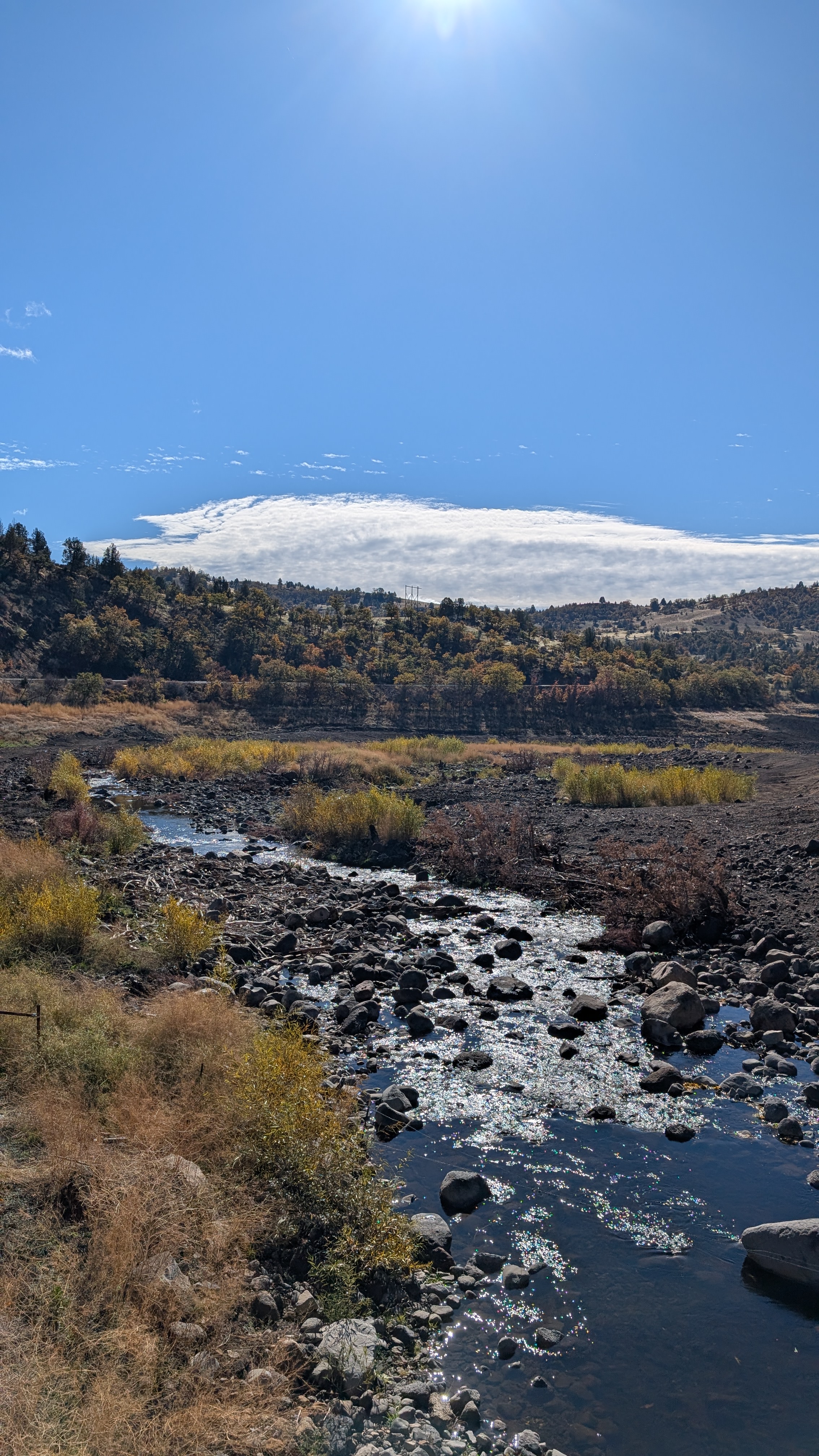Fisheries
Salmon runs once filled the Klamath River in abundance, and acorns from the surrounding oak woodlands provided nourishment and were carefully harvested, stored, and prepared in abundance. These resources are staples of survival woven into the spiritual and cultural identity of the Karuk people.
Today, the Karuk Tribe Fisheries Program carries forward this responsibility by monitoring the health of the middle and upper Klamath fisheries. The program works to restore salmon runs, protect aquatic habitats, and ensure that future generations can continue to rely on these vital resources. Through research, monitoring, and collaboration, the program reflects the Tribe’s commitment to cultural preservation, food sovereignty, and sound ecological stewardship.



Klamath River Fish
The Karuk Tribal Fisheries Program is primarily focused on the monitoring of the following species: coho salmon, Chinook salmon, steelhead, pacific lamprey, and green sturgeon. These species have both cultural and ecological importance.
Salmon are also ecologically important; they’re known as “keystone species.” This means that they have a disproportionately large impact on their ecosystems. In fact, a report by the Washington Department of Natural Resources found that at least 137 species of wildlife in the Pacific Northwest eat salmon at some point in their life. This means that when we protect and enhance salmon populations, the ecosystem as a whole benefits as well.
Tribal Fisheries
Since time immemorial, native people throughout the world have stewarded their natural environments, and the Karuk Tribe is no different. Historically, their work began with the Spring Salmon Ceremony at Ameekyáaraam. During this ritual, fishing was taboo throughout much of the Klamath basin, allowing for spring run Chinook to make their way into the system to spawn. At the conclusion of the ceremony, Karuk people used dip nets, fish traps, and weirs to collect salmon, taking part in a rich history of stewardship and reciprocation.
Now, tribal fisheries management looks different, due to many factors. One of these is the decline in salmon returns, which has deeply impacted the Karuk people’s ability to undertake their ceremonies and utilize salmon as a food source. As these declines continue, the need for intervention is clear. With a combination of traditional ecological knowledge and western science, the Karuk Tribal Fisheries Program aims to protect and enhance salmonid populations throughout the basin. Not only does this benefit the spiritual and physical health of tribal members, but it improves the ecosystem as a whole.




FAQs
The KDNR Fisheries Program leads research and restoration efforts to recover native fish species, improve water quality, and uphold the Tribe’s rights and responsibilities along the Klamath River.
The Karuk Tribal Fisheries program works within the Klamath River Basin. Our areas of focus are the mainstem Klamath River and various tributaries including the Salmon River, Scott River, and Shasta River.
Our program conducts monitoring of salmonids throughout their life cycle. Our work on adult return monitoring includes spawning surveys, snorkel surveys, PIT tag antennas, and radio tagging. As juveniles, we trap salmonids to take genetic clips, insert PIT tags, and conduct snorkel surveys to determine residency. We also monitor habitats that these fish reside in, including assessing flow and temperature.
By understanding the distribution and health of salmonid populations in our study areas, we can make informed decisions about where and how to conduct restoration. For example, our department assessed the use of thermal refugia, or cold streams, to coho salmon during the hot summer months.
Since understanding this phenomenon, we know how important it is to maintain and improve these cold water inputs for the benefit of endangered species. Additionally, our work contributes to population estimates made by the US Fish and Wildlife Service and the California Department of Fish and Wildlife, which inform decision making at higher levels.
There is no “one way” to get into fisheries work. Our crew's backgrounds are varied, including people with experience in environmental science, forestry, and of course fisheries. Our diverse backgrounds ensure a diverse mix of ideas and experience that enrich our team. Interested in joining us? Check out our open positions: https://www.karuk.us/employment/open-positions